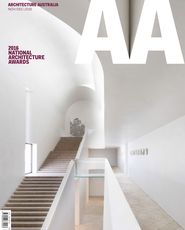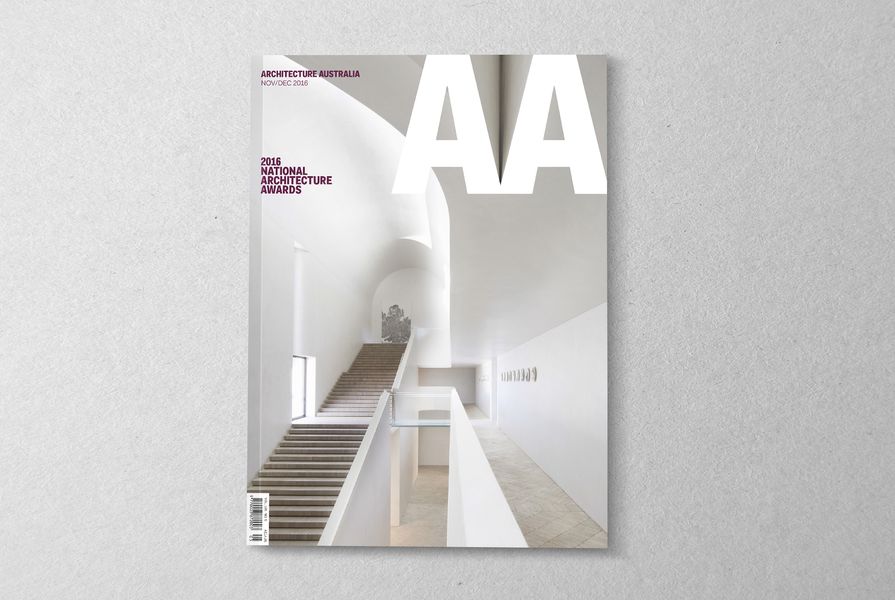
Architecture Australia November/December 2016.
Image: Sharrin Rees
At a recent talk in Melbourne, New York-based, Australian-born artist and filmmaker Natasha Johns-Messenger responded to a question about her practice with the sally “you had to be there.” This concise answer to an inquiry about the affective and enduring qualities of her site-specific, phenomenological interventions and installations has a conceptual resonance in both art and architecture.
Natasha was speaking at the occasional On Top of the World talk series presented by John Wardle Architects and Spacecraft Studio ahead of the opening of her solo exhibition Sitelines at Melbourne’s Heide Museum of Modern Art, curated by Linda Michael. Sitelines is insightfully reviewed by Suzie Attiwill in this issue of Architecture Australia. Suzie brings her assiduous engagement with interiors and interiority to the critique, describing how Natasha’s work enables us to see the Heide gallery interior, building and landscape differently and the way “perceptions are tricked, assumptions are confronted and [visitors] have to look without recourse to logic or memory to make sense of what is seen.”
When Natasha suggested that “you had to be there” to fully comprehend or appreciate the works, she opened up an intriguing space between object, experience and reception. In Natasha’s (art) practice this manifests as a somewhat precarious and delightful frisson between the work’s construction and materiality, its artistic and emotive consequences and its range of interpretations (for example, from insights offered by a casual gallery visitor to those offered by an academic or critic). To be “there,” in one of Natasha’s works, requires all three acts of engagement. This coexistence makes Natasha’s Sitelines at Heide profoundly architectural and it deeply resonates with architects and interior designers and has also been well received within the arts community. This triadic structure has a parallel manifestation in the built environment – all three of these actions are present in the story of a work of architecture.
In this issue we celebrate the Institute’s 2016 National Architecture Awards. Each year, the awards jury travels the length and breadth of the country to see projects of all types, scales, locations and budgets. If asked about any one of the awarded projects, the jury might echo Natasha and say, “you had to be there.” This response would demonstrate the way object, experience and reception entwine to create a story about architecture. The buildings and their settings; the presentations the jury receives from architects, clients, users and inhabitants; and the jury’s conversations and deliberations along the way (and the accompanying citations they have carefully crafted) all exist within this year’s cohort. In this case, the narrative is also one that celebrates the best work of Australian architects in 2016. Congratulations to the practices that were awarded in the regional or state programs, and to those that have received recognition at the national level.
Cameron Bruhn, editorial director, Architecture Australia
Follow Architecture Australia on Twitter
Subscriptions and back issues: Print and Digital
Source

Archive
Published online: 4 Nov 2016
Words:
Cameron Bruhn
Images:
Sharrin Rees
Issue
Architecture Australia, November 2016





















